By: Sydney Vollmer, ARB Intern
Almost one year ago, Jeremy Dubin, Artistic Associate with at the Cincinnati Shakespeare Company, was kind enough to answer some questions we at the ARB had about the company. After writing our last blog on the costume designs in King Lear, we decided we were curious about what goes on in the mind of a costume designer. So, we went back to the CSC. Resident Costume Designer, Amanda McGee, answered everything we wanted to know. Below is the full copy of the interview with images.
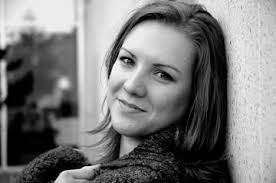
Amanda McGee
SV: Where are you from?
AM: I grew up in Plano, Texas but have spent many summers in Colorado. I went to graduate school in Minneapolis, MN. I call many places home!
SV: How long have you been a costume designer?
AM: I have been designing professionally for about ten years.
SV: How and when did you decide this is what you wanted to do?
AM: I fell in love with theatre at a young age. I was a very precocious child and loved any opportunity to be on stage or backstage. While studying acting in college, I worked in the costume shop and took design classes. My professors enjoyed my work and threw a few design opportunities at me. My first design project was a set design for Agatha Christie’s The Mousetrap. It was terrifying and thrilling and made me want to do more. When I graduated college, I applied to many internships and found myself working in the costume shop for a repertory theatre in Colorado for the summer. From there, I created connections with other costumers at other theatres who kept giving me work. After about three years of costume internships I realized that costume design had chosen me!
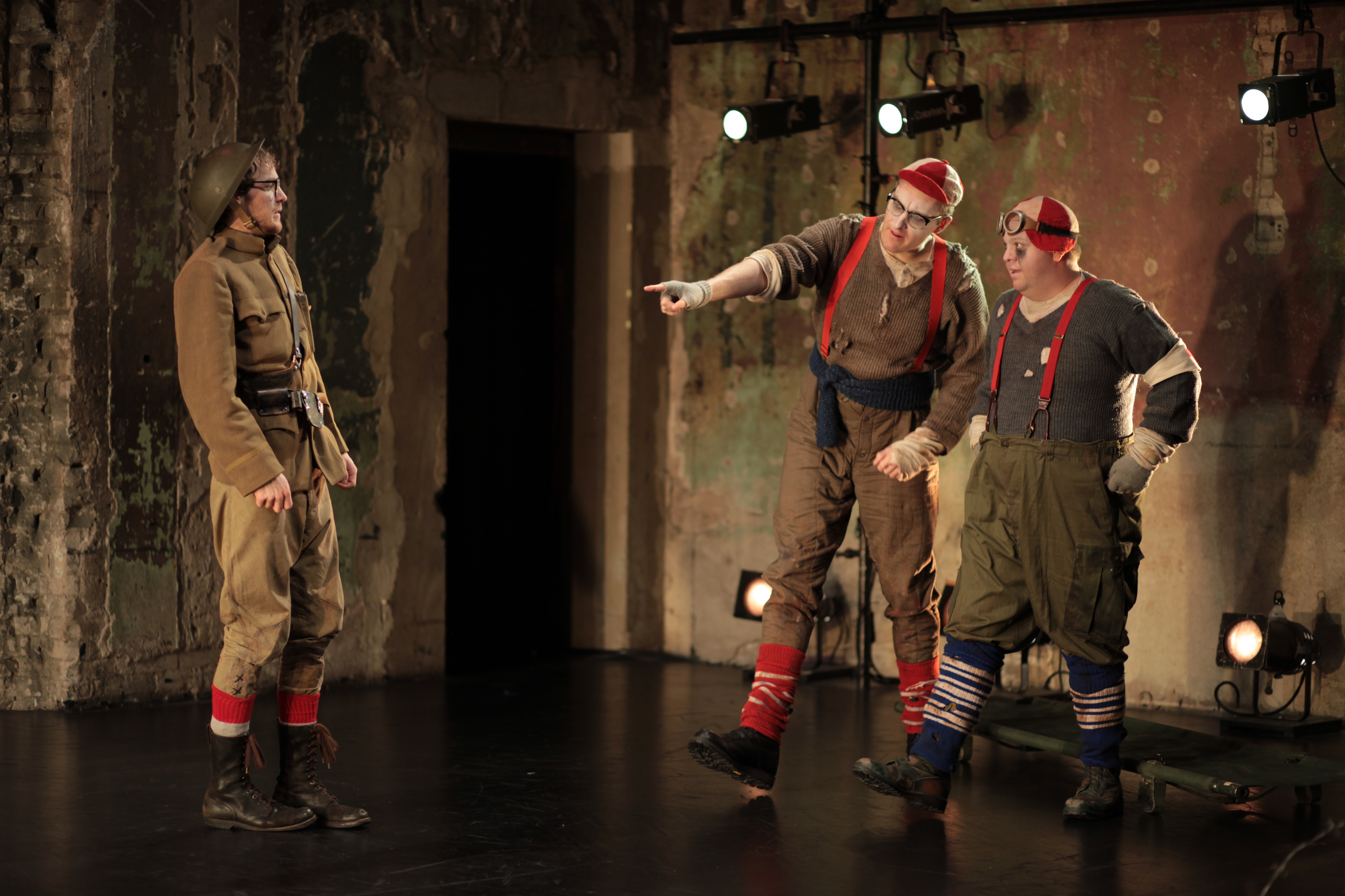
“Picnic on the Battlefield”
SV: How did you get involved with Cincy Shakes?
AM: I took an internship as a costume design assistant back in 2007. I worked for two years as the wardrobe supervisor and designed a handful of shows on the main stage. This company strongly shaped my aesthetic as a designer and gave me the confidence to pursue my Master’s degree in costume design and technology.
SV: Tell me about your process for designing and producing costumes.
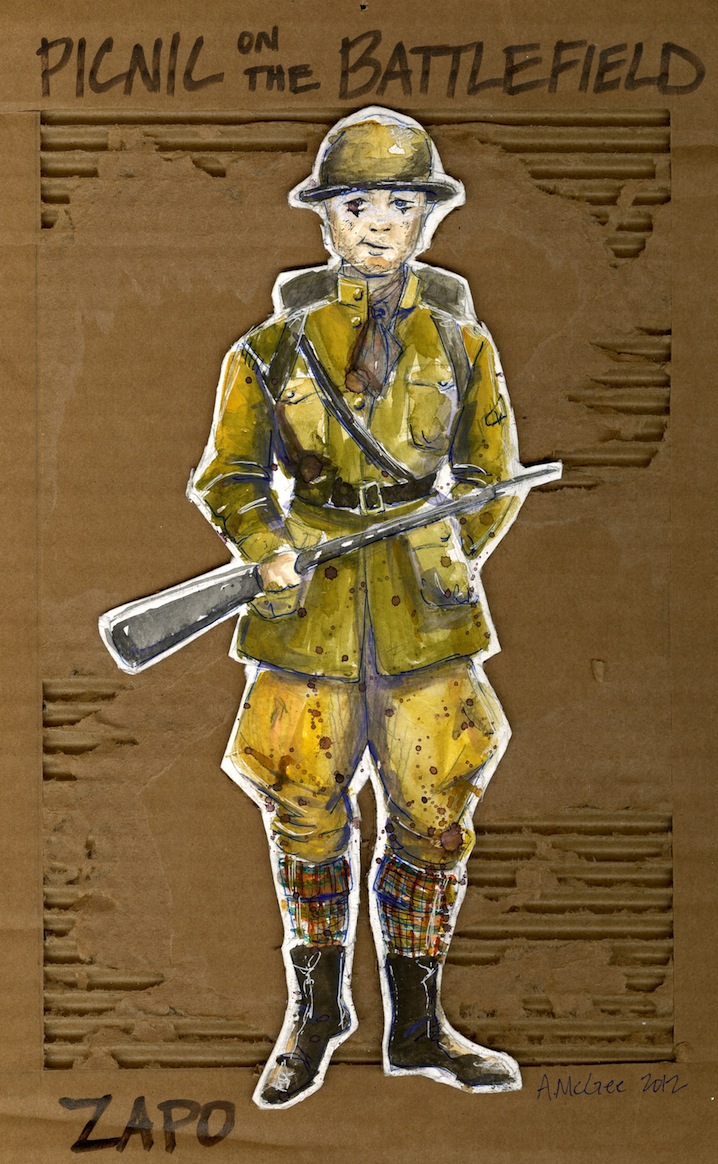
Costume design for Zapo (“Picnic on the Battlefield”)
AM: The beautiful thing about costume design is that there is no typical day. Each show has its own set of needs and challenges and no process is ever the same. The process always begins with the script, and I try to read through the play at least twice before starting conversations with the director. The first read is to get the flow and feel for the story, and in the second read I start to break down the specific needs of the play. I chart out which characters are in each scene and note any given costume changes. I use excel documents a lot to plot these details, and also start running lists of every item an actor will need. This list eventually turns in to a pull list and a budget. We try to decide which items we will purchase, build, pull, or rent, and estimate how that will affect our budget. From a design perspective, I look for cues from my director about the tone and general aesthetic of the production. With the help of the lighting and scenic designers, we create a complete picture that honors the story and inspires the audience. Not every show requires renderings, but I really love to discover the play through drawing and detailed research. Something magical happens for me when I am able to sketch out a character. Not only does the character reveal itself to me through drawing, but the clothing also starts to manifest in real life. I can’t tell you how many times I have wished for a very specific item or fabric and then the theatre unexpectedly receives a donation of that very thing.
SV: Where does your inspiration come from?
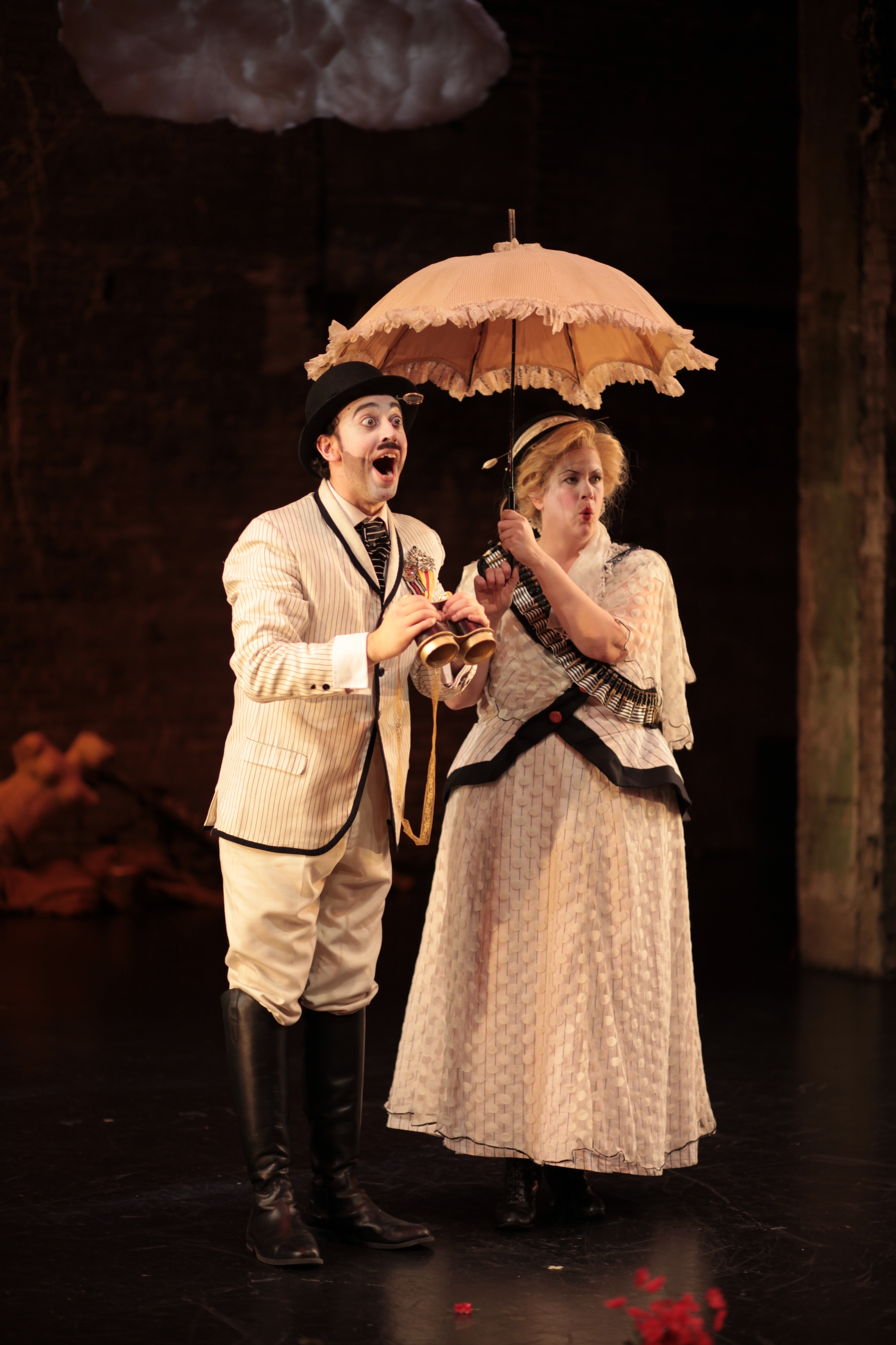
“Picnic on the Battlefield”
AM: I am inspired by everything! I listen to all kinds of music from Radiohead to Tchaikovsky and find that a steady flow of tunes keeps me happy.
SV: Have you ever done costumes for King Lear. If so, how did you make them unique?
AM: Lear is on my wish list; I have yet to design it!
SV: What is your favorite costume you’ve designed?
AM: I worked on a project in grad school called Picnic on the Battlefield. It was a satire on war and all the characters were a bit clownish and dirty.
SV: What materials do you like to work with? Why?
AM: I love linen and silk and leather because they look delicious on stage and are easily shaped and manipulated. I often use bleach as a painting and distressing element and look for fabrics that will react to bleaches and dyes well.
SV: What is the most unusual/most difficult material you’ve worked with?
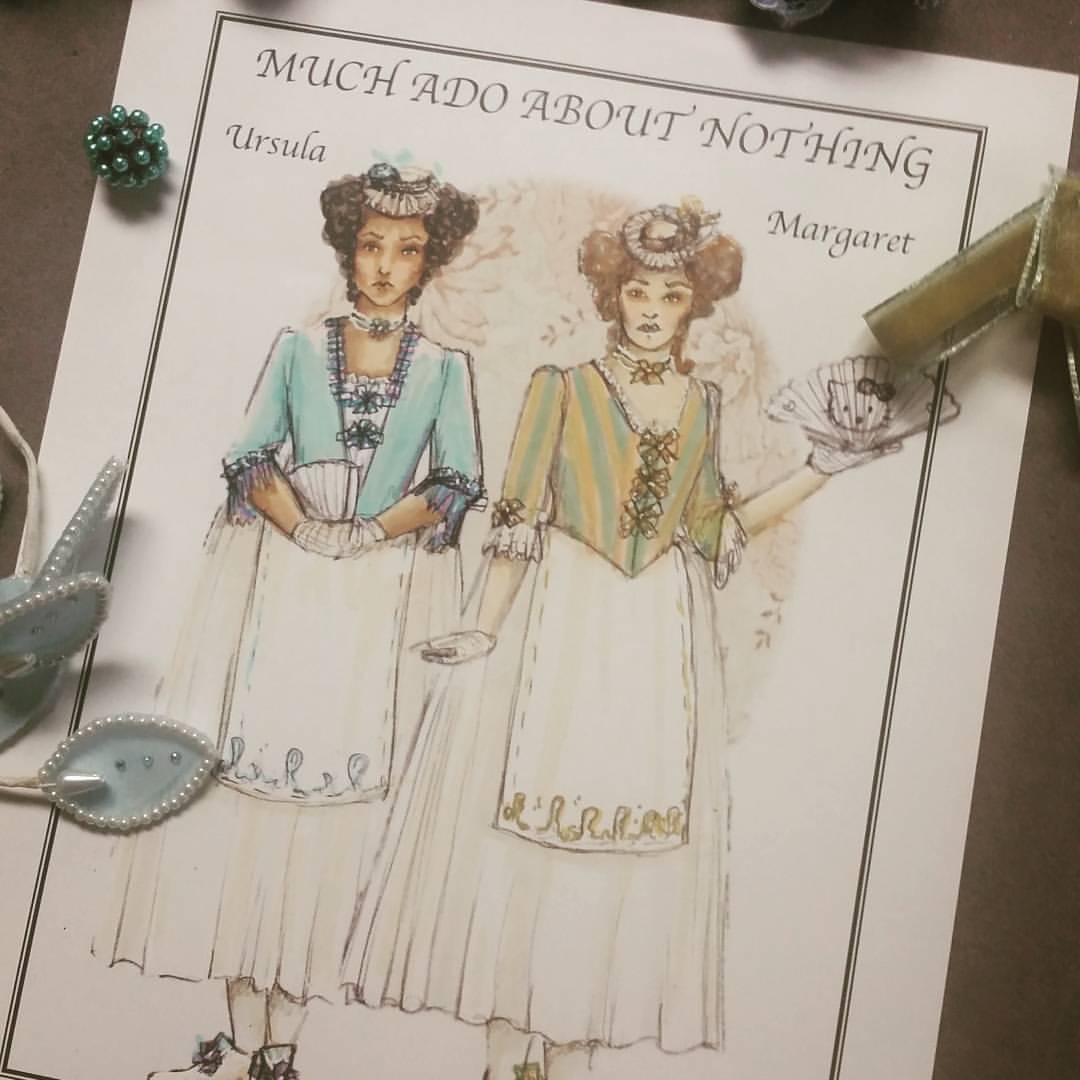
Sketches of Ursula and Margaret (“Much Ado About Nothing”)
AM: I recently used rubber floor mats to create medieval crests for our Henry VI. Last season, we used bottle caps and yogurt lids that were spray painted to create belts for Julius Caesar. I have also transformed mesh laundry baskets into fairy wings. In a touring production of Midsummer we used gold faucet fixtures to create Puck’s horns, and part of Titania’s bodice was created from straw placemats. I really love found objects because of the unexpected textures they create.
SV: Why do you think costuming is important to performances?
AM: Costumes, like any other design element, are about supporting the story. On a more specific level, costumes can have a great deal of influence on shaping the character, establishing a time period, or expressing the tone of the play. Sometimes that means elaborate period clothing and other times that means jeans and a tacky Christmas sweater.
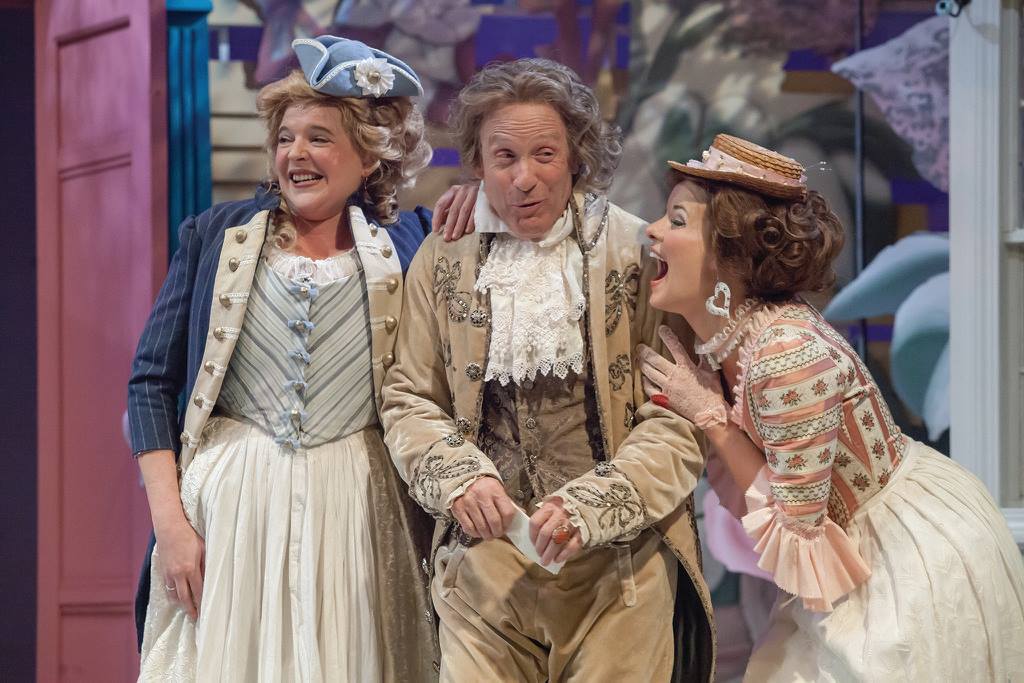
“Much Ado About Nothing”
SV: Do you have a costume designer you idolize?
AM: I have always enjoyed Colleen Atwood’s work. Her designs for Sweeney Todd and Alice in Wonderland were especially inspiring. I also look up to my graduate professor, Matt Lefebvre, who has such a classy sense of style and finds innovative solutions to design challenges. I am inspired by so many other theatre artisans and technicians who I have been lucky to cross paths with, from wig makers to drapers, and props artists. I idolize anyone who can teach me a new skill or blow me away with their artistry.
Amanda was kind enough to send us images of some of her work. The first are from Theatre Novi Most’s 2012 production of Picnic on the Battlefield (an original tragic comedy about the absurdities of war). The second are from Cincy Shakes’ most recent production of Much Ado About Nothing.
To learn more about our Shakespeare holdings and other collections in the Archives & Rare Books Library, call us at 513.556.1959 or email us at archives@ucmail.uc.edu. You can also visit us on the web at http://www.libraries.uc.edu/arb.html and our Facebook page can be found at https://www.facebook.com/ArchivesRareBooksLibraryUniversityOfCincinnati where we post all sorts of things about books, archives, libraries, and UC history every day. We’re open Monday through Friday, 8am-5pm.
